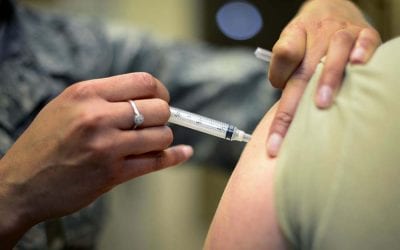
Travelers can get caught in hurricanes, blizzards, and tsunamis, all of which can cause widespread power outages. Even more mundane equipment failures can cause widespread power outages while traveling. Sometimes the outages are short-lived, but sometimes the outages can last for days.
A cell phone could be the only means to communicate with family and friends during a power outage. A cellphone might be the sole “life-line” permitting contact with the outside world for help if stranded and needing rescue and/or critical medical assistance.
A cell phone, and especially a smartphone, may be the only access to travel services by phone and Internet to make new reservations for transportation, hotel accommodations, and other necessary travel assistance, and to contact a travel agent who can, possibly, perform travel reservation magic.
Recently, in the wake of Superstorm Sandy, 25% of cell phone users, travelers and residents alike, in the affected area of the northeastern US, lost their cellular service, some for days, in large part due to the power outages caused by the storm.
Despite that statistic, please note about 75 percent of cell phone users in the affected area maintained their cellular services, as long as they were able to keep their cell phones powered.
In the US, most cellular towers have some kind of power backup which can last from about 2–8 hours in a power outage; some, equipped with emergency generators, can last much longer. There is little doubt that after Sandy, the FCC (Federal Communications Commission) will significantly raise the requirements for emergency cellular tower power backup in the US. It is likely that other parts of the world will be considering the same issues and will be instituting new requirements for their cellular industry.
Of course, even if the cellular towers continue to work during a power outage, if the cell phone battery is out of “juice,” travelers will be out of luck without a means of recharging it in a power outage emergency.
Travelers have a number of possible methods available to keep their cell phones charged even during prolonged power outages.
• For road trips, I’ve kept a power inverter in my car for more than a decade. I first got it when I wanted to power my laptop in my car and keep it charged. It can easily keep cell phones, laptops, and tablets powered as long as you have fuel for your vehicle. These little units are inexpensive and should last for years. A 150W Tripp Lite Portable Auto Inverter costs less than $40.
• Also for road trips, take a portable auto charger for a cell phone. I’ve purchased one of these inexpensive units for every cell phone I’ve owned over the years. I bought one for my iPhone the same day I purchased the iPhone to keep it fully charged when using it as a GPS while traveling on the road. These chargers generally cost less than $20. During a power outage, it’s not as versatile as a full blown power inverter, but it will keep your cell phone charged.
• For travel everywhere, I’ve packed at least one portable battery charger. I originally purchased this item to be able to run my iPod to view videos and movies on long flights between the US and Europe, the Middle East and South America. At this time, I highly recommend the Mophie juice pack powerstation duo ($99.95). The Mophie juice pack powerstation duo, with its 2.1 amps charging output, and 6000 mAh battery, can charge typical smartphones several times on a single charge, and can even put in about a 40 percent charge into the latest iPad’s 11,560 mAh battery.
• Laptop USB ports can be used to recharge cell phones. To retain as much laptop battery power as possible during a power outage, keep the screen dark while using the laptop to recharge the phone.
• Finally, there are actions that minimize the drain on a phone’s battery and to extend its life. Turn off Bluetooth and WiFi. They can suck the life out of the battery. Turn off all non-essential apps from running in the background, and keep the screen’s brightness as low as possible during use. Consider using an app which keeps your battery fresh. I’ve used “Battery Doctor” monthly, on my iPhone, for a couple of years.
After many years working in corporate America as a chemical engineer, executive and eventually CFO of a multinational manufacturer, Ned founded a tech consulting company and later restarted NSL Photography, his photography business. Before entering the corporate world, Ned worked as a Public Health Engineer for the Philadelphia Department of Public Health. As a well known corporate, travel and wildlife photographer, Ned travels the world writing about travel and photography, as well as running photography workshops, seminars and photowalks. Visit Ned’s Photography Blog and Galleries.

